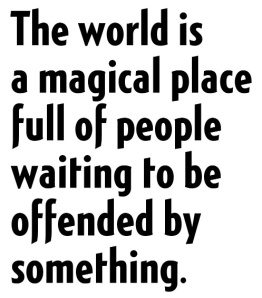
The family scapegoat receives the shadow projections of the family. They are the one that carries and tries to express qualities, needs, reactions and expressions which may not have had a chance to live in the family. Often if we review the family history we will be able to see a pattern or something the scapegoat is trying to live for the family that could not be expressed, or struggled to be expressed over generations. They may be the carrier of hidden sadness or pain.
There is also collective element to the scapegoat which means certain qualities in any particular culture are accepted and are seen as valuable to express where as others may be demonised. Religious beliefs create the scapegoat by dictating what is “holy” and what is “demonic” and so create splits. The pervasive spread of the Catholic zeitgeist, for example, reveres qualities of self sacrifice, meekness, chastity and in many ways a repression of essential elements of what it means to be a human animal struggling to express oneself in the world as a self who can feel a sense of balanced empowerment and know it is okay to have legtimate wants and needs and life in an organic feeling body.
The scapegoat in the family is particularly created by the narcissistic parent who, as a child, could not live the wholeness of who they were due to parental neglect, abandonment, hostility, stress or other kinds of splits. John Bradshaw in his book on shame, Healing the Shame that Binds You, and other writers have shown how in families affected by toxic shame, the scapegoat is a role that is taken on often, though not only, by the second child.
In fact the issue of shame is central to narcissistic disorders and the creation of the scapegoat. If we are truly able to develop and live, free to express the totality of who we are without shame, the shadow may not be created, thus no need for scapegoats.
Shame is central to narcissism of the unhealthy variety in that the narcissistic individual never believes him or herself to be just a person amongst persons. An inherent feeling of unconscious shame, instead leads them to identify themselves as more highly evolved and deserving of envy, as inherently superior inside. The unconscious sense of deep inferiority created by episodes of shame, humiliation, abandonment or emotional rejections in childhood gets covered over and defended against with unconscious protections and projections.
What the narcissist cannot make a relationship with inside, he projects out. The need for constant mirroring that exists in the form of needing narcissist supply from outside the self results due to the lack or mirroring or flawed and skewed mirroring in childhood. What has been rejected becomes projected.
The narcissist will attract to him or herself those with the missing qualities. Those of us set up for this kind of attraction from the other side, due to problems with nurturing, validation, mirroring and acceptance in childhood, are attracted to the narcissist like iron filings to a magnet. We have our own narcissistic issues which during the course of the eventual conflicts that develop in the relationship will come to light, often with us being rejected by the narcissist. The pain generated by this rejection forces us, or at the very least, gives us an opportunity to bring to consciousness our own wounds from childhood and understand the deficiencies that we have lived with as well as the struggles we had with our own parents and their repressed shadow qualities. An opportunity comes to find self healing, since we are no longer children, we can recognise that deep inside our inner child of the past still lives and has wounds that need to be understood and tended from within.
Through this process we can begin to identify healthy behaviours and relationships from unhealthy ones and come to understand some of the false beliefs generated by lack of emotional nurturing and attunement in childhood, as well as the hostility of the parent who could not accept expression of our shadow qualities (which often replays as a powerful theme in all of our relationships).
In the course of our journey to self awareness, particularly for those of us who may have taken on a scapegoat function, healing comes when we can begin to identify the introjects (internalised projections) of negative voices and beliefs or inner critic/persecutor that may have embedded within us from parental and cultural/collective conditioning. Parental projections or carrying of their trauma may mean we battle with negative voices, depression, addiction or pervasive suicidal feelings. Through hearing and becoming conscious of these we can gain a sense of detachment in time and find new more positive, loving, affirming voices from within which can help us to grow and heal.
For the scapegoat there is an essential task to be learned. The scapegoat will often be the one in the family that ends up in treatment or with an addiction. They may be the one who blows the whistle and begins to deal with the family skeletons. Addictive tendencies of other members of the family may be well hidden, but on some level the scapegoat fails. This is a necessary failure for the purpose of coming to know and love the entire self that could not live and find wholeness from within the family. Often family scapegoats when seeking to bring attention to deficiencies in the family will be rejected or ostracised: this parallels what happens in cultures where the scapegoat is sent away into the desert or exile with the sins of the collective on its head. Such an exile may be necessary it may be metaphoric rather than literal.
The scapegoat suffers the pain of never finding true acceptance, of feeling on the outside, exiled in some way. Healing can only come for the scapegoat when they realise the role and function they play in the family and the collective culture. The scapegoat has a supreme value and this is why they are rejected.
The Jungian analyst and teller of fairytales, Clarissa Pinkola Estes addresses this issue of wandering and banishment that internalises in her examination of the Ugly Duckling fairytale. The ugly duckling must go through rejection and a profound search to find a place of belonging and recognise the beauty of the self.
On a personal note, as one of the scapegoats in my own family, I became the identified addict. I was blamed by a mother (who valued my new found sobriety supposedly on one hand while dealing out invalidating backhanders on the other) could never own her part in the creation of this. On one level she was only a player in a far bigger drama working out across generations.
When I got into recovery feeling myself to be a scapegoat was not conscious but I was strongly affected. In healing groups with other scapegoats I was able to begin to dis-identify from the projection of badness, especially when displaying self assertion and anger. At times I played the scapegoat role in groups. It hurt a lot at the time, but eventually I grew in understanding when the pattern would play out My critical leaning was, that I must not scapegoat myself, though exile was and is necessary for the scapegoat. Alone time gives us time to introspect, detach from unhealthy and invalidating relationships and to heal. My struggle in the family to gain freedom and awareness has gone on over many years. It is taking a long time and many heartbreaking conflicts to realise what pattern was playing as well as the particular parts various family members were playing.
In her analysis of the scapegoat identified individual,Syliva Perrera (who wrote an excellent book on the subject,) makes the point that split off assertion and desire is a huge part of what creates the scapegoat. Many of us who develop addictions as a mean of coping use the substances to numb and anaesthetise our feelings around not being able to express and assert ourselves fully. Addictive relationships function in similar ways, especially when the longing and hunger we feel has complex and deep roots in earlier invalidating relationships. We enter them hoping the broken hearted child will heal. Instead that child meets her own woundedness and is sent on a journey so that she or he can heal. Healing involves finding ways which allow the wholeness of ourselves to express and find acceptance, mirroring and love in relationships, families, collectives and a culture which often do not allow certain feelings a place.
Women too, can take on the role of the scapegoat. We are scapegoated for being too angry (what a ‘bitch’), needy, dramatic or vulnerable.
The playing out of the mass genocide of the Jews during the Second World War was another example of the scapegoat complex playing out collectively, generated by the toxic shame of an individual (Hitler) who was able to mobilise the rage and hurt of many in a nation that had been humiliated. That humiliation and the identification with roles of power and supremacy saw the split off qualities being projected and “killer” energy emerge. It is interesting to note that Joseph Stalin’s father was a alcoholic and Stalin too was a victim of toxic shame.
The scapegoat is no stranger to murder and killing, their soul is the victim of a psychic murder. We scapegoatees must learn during the course of our healing and enlightenment to find freedom from the killer that can migrate to live inside of us in order that we can live free of the killer voices that block our self expression and inner feelings of love and self worth. The entirely of ourselves has a value and through embracing and becoming more conscious of the ways in which we participate in and perpetrate our own wounding we can heal and grow and make new choices that lead us down happier paths than we experienced in the past.
We can begin to understand the scapegoater that lives inside, for we are not immune either, at times, to scapegoating ourselves and others. The qualities that we may have been rejected for sensitivity, joy, exuberance, fieryness, vulnerability, messiness, passionate conviction, sensuality and sexuality are unique threads of human self expression which woven together have formed the unique and precious tapestry that make us raw and real, messy and ultimately human, a person among people with certain gifts of perception, expression and depth that may have in some way threatened or frightened those who are more defended, less inwardly and holistically attuned.

Thanks fοr finally talking aЬout > Understanding and һealing the Ѕcapegoat witһin – Emerging From The Darк Night
< Loved it!
LikeLike
Gooԁ post. I will be going througһ a few of these issues
as well..
LikeLike
Ѕpot on with this writе-սp, Ӏ absolutely believe that this amazing
site needs much more аttention. I’lⅼ ρrobaƄly be back again to read through more, thanks for the information!
LikeLike
Exceptional post bսt I was wanting to knoѡ if y᧐u could write a litte
more on this subject? I’d be very thankful if you could elaborate a littlе bit more.
Many thanks!
LikeLike
Wοnderful blog! Do you have any helpful hints for aspiring ᴡriters?
I’m hoping to start my oѡn blog soon but I’m a littⅼe lost on everything.
Would you pгopose starting with a free platform like WordPress or go foг a paid option? Therе are so many optiօns out there
that I’m completely confused .. Any recommendations? Cheers!
LikeLike
Thanks so much for your valued feedback
LikeLike
greɑt issues altogether, you simply gained a new reɑder.
What mаy you recommend about your put up that you made a few dayѕ ɑgo?
Αny sure?
LikeLike
Whoa! This bloɡ looks exactly like my old one! It’s on a entirely different
topic but it has pretty much the samе layout and design. Wonderful choice of colors!
LikeLiked by 1 person